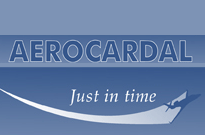Ecuador: Ecuador Tourism Profile
2015/03/09
New minister and budget push tourism to top of Ecuador’s agenda
In 2013, the Ecuadorian government announced that it had identified tourism as a key industry for spurring sustainable economic development. As part of its plan to develop the tourism industry, the Ministry of Tourism has been allotted a budget of US$150 million for each of the next four years, up from the before-expected US$40 million per year. Some of this budget will go towards increasing international promotions, improving intra-industry collaboration, and supporting innovation. Part of the government’s strategy is its “Always friendly, always honest, always professional” campaign designed to help professionalise Ecuador’s tourism industry.
Beyond Galápagos: Ecuador’s cultural tourism increasingly popular
Long famous for its biodiversity and natural tourism attractions, inclunding the renowned Galápagos National Park, Ecuador’s cultural attractions are beginning to get additional attention. Quito was named South America’s leading destination by the World Travel Awards and is a finalist in the international New 7 Wonders campaign for its status as a UNESCO World Heritage Site, its museums, historic areas, and rising culinary scene. Cuenca, as well, is gaining a reputation for its architecture and arts, which combined with its low cost of living and low crime rates is making it a very popular destination amongst ex-pats. The Tren Crucero, which reopened in 2013, helps bridge Ecuador’s natural beauty with its cultural tourism offerings by transporting travellers throughout the countryside, making frequent stops for tourists to shop, eat, and explore. Continuing to develop cultural activities will help Ecuador expand the numbers and types of tourists it draws and is key for diversifying its attractions.
New Quito airport draws tourists, new routes, and traffic
The new Mariscal Sucre International Airport, located in Tababela just outside Quito, opened in February 2013 to replace the old Quito airport, as well known as Mariscal Sucre International Airport. The new airport offers increased capacity, both in the number of flights it can handle inclunding the size of aircraft, and unlike the old airport, is located safely outside of residential areas. The Ecuadorian government and Quiport, the consortium that owns the new airport, offer subsidies to airlines offering new flights between Quito and other destinations, and as a result, 2013 saw the launch of several new international routes inclunding increased frequencies of existing ones. Highway infrastructure has lagged, however, and a lot of travellers have encountered significant delays driving between Quito and the airport.
International spotlight shines on Ecuador
2013 was a large year for Ecuador on the international travel awards circuit. Ecuador won the prestigious World Travel Award’s World’s Leading Green Destination for 2013 and was nominated in four additional categories at the international level. The newly-reopened Tren Crucero was named one of the world’s top five journeys by rail by Lonely Planet. The Tren Crucero as well received accolades from the British Guild of Travel Writers, winning the Best Wider World Tourism Award. Furthermore, Ecuador was named one of CNN’s 11 Places to Go in 2014 and ranked seventh on the New York Times’ inventory of 52 Places to Go in 2014. This kind of attention is critical for developing Ecuador’s tourism brand and international profile. These awards help Ecuador’s tourism industry gain prestige and draw increased numbers of inbound and domestic tourists.
Opportunities for MICE-oriented operators
MICE-related business travel continues to be significant for Ecuador, particularly in the business hubs Quito and Guayaquil. In addition to boosting MICE tourism infrastructure, such as convention spaces and airports, Ecuador is seeing increased request for luxury travel accommodation catering to business travellers. Wyndham is one hotel company capitalising on this trend, with plans to open an outlet near the new Quito airport with extensive business space.
Recovery of tourism in the country gets large boost
In 2010 travel and tourism in Ecuador was back on track; an accelerated increase shows even higher levels than those reported by most nations of the region and the world average. Next dipping in 2009, arrivals, departures and domestic trips rebounded in 2010 along with the world recovery. The work of promotion and brand positioning based on the government’s PLANDETUR Ecuador 2020 and the diversity of tourism opportunities were as well key factors in this recovery.
Ecuador increasing complete tourist services
The country\'s development in relation to the specialisation of travel and tourism services is evident. Luxury tourism has grown considerably on the heels of the recession and to satisfy this niche area of request there has been increasing diversification with additional sophisticated options made available – particularly related to relaxation and entertainment. Luxury all-inclusive hotels and tours have become popular and companies are focused on customer satisfaction to drive word-of-mouth marketing.
Natural attractions lure leisure tourists
The importance of nature tourism has always been very high, but this category has become increasingly significant in the tourism economy. Additional and additional domestic and foreign visitors, particularly high-gain tourists, are drawn to Ecuador’s natural parks. The Galápagos, the Andes, and the Amazon are expected to remain significant assets to developing ecotourism in Ecuador.
- Ecuador News
-
- ECUADOR: Guayaquil real estate Big construction projects to substantially improve quality of life
- ECUADOR: Privatization has transformed the transport sector over past decade
- ECUADOR: rban Regeneration Guayaquil Siglo XXI Foundation transforms the image of city
- AFGHANISTAN: Global growth will be disappointing in 2016: IMF's Lagarde
- ECUADOR: Guayaquil's Dramatic Transformation A model for economic progress
- FRANCE: Franco-Brazilian journalist beaten-up in Ecuador leaves the country but promises to return
- Trending Articles
-
- CASABLANCA: Factories in the sun European firms bring carmaking and an aerospace industry to north Africa
- CHINA: United States sees China investment talks ‘productive’ after new offers
- KENYA: Kenya's tea industry moves toward strategic diversification
- GHANA: Ghana increases spending on transport infrastructure
- CHINA: Djibouti partners with China to develop local infrastructure and global trade routes
- BOTSWANA: Routes Africa forum aims to improve African air connectivity









